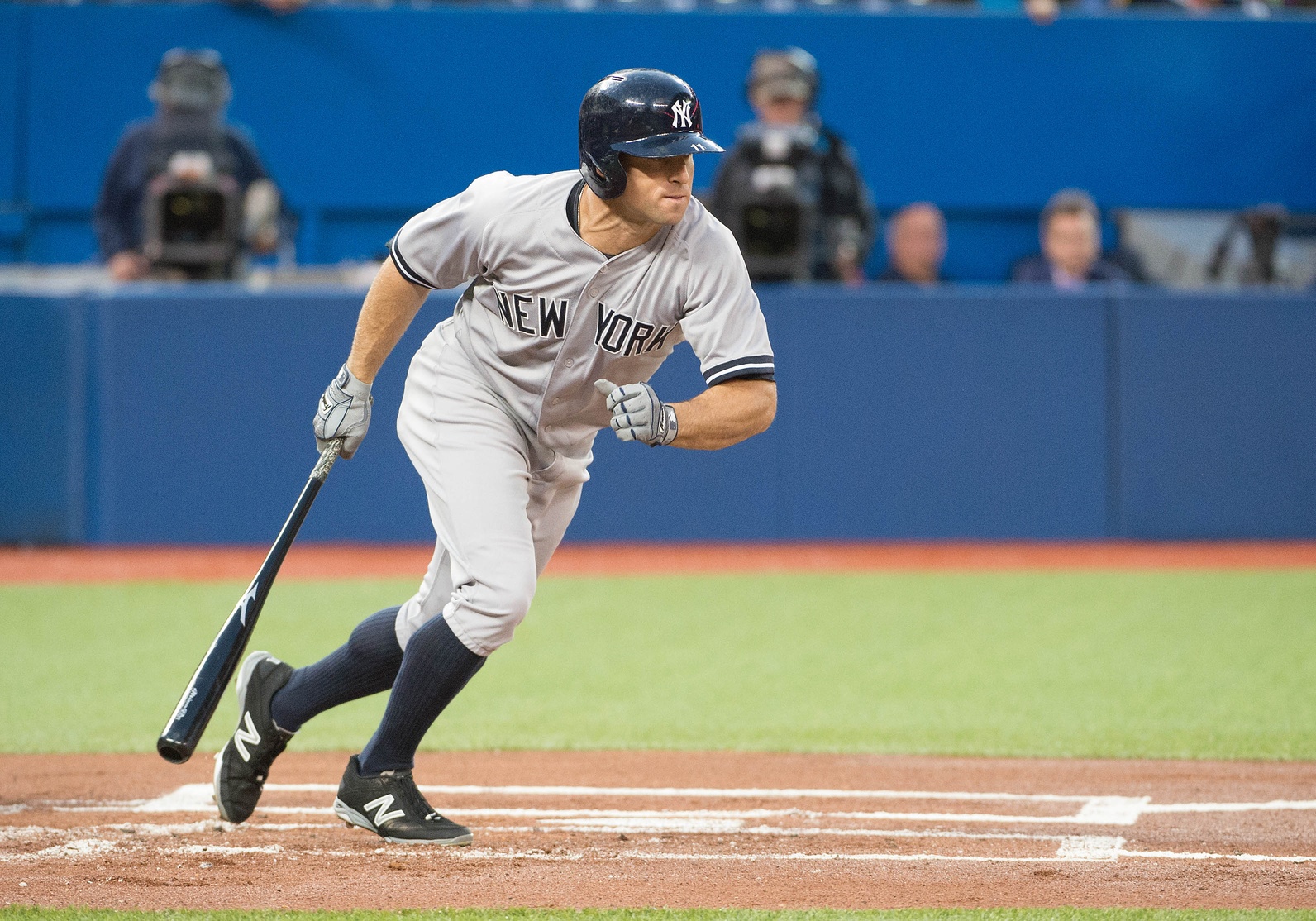Brett Gardner is the second-longest tenured player on the Yankees roster (after A-Rod), a fairly beloved homegrown product who has contributed to a World Series title and five playoff teams.
He’s also a 31-year-old set to begin his decline phase, and for that reason, he’s recently been the subject of some trade rumors, some of which have him headed to Seattle for a young pitcher.
Cutting ties with Gardner after all these years would sting, but it’s probably the right thing for the Yankees to do. Here’s why:
- The Yankees should get younger in their starting lineup
Critics have been saying it for more than a decade now, but it’s as true now as ever, if not more so: The Yankees could benefit from some youth in the starting lineup. Of 10 players who received at least 350 plate appearances for New York last season, nine were 30-plus years old. And without a conscious youth movement, that won’t change much. Without a major move, next year’s Opening Day lineup will be even older than 2015’s.
For a while now, the Yankees have defeated Father Time by embracing him: They’ve just kept re-stocking with veterans, using up their final productive years and then repeating the process. But the fall of free agency (this year’s robust class notwithstanding) has made that approach less tenable, and a large chunk of the Yankees’ lineup is tied up for the next several years, meaning the team may have to (further) ride out the declines of Mark Teixeira, Alex Rodriguez, Carlos Beltran, Chase Headley, Jacoby Ellsbury, and Brian McCann. There’s truly no easy path to re-tooling.
Trading Gardner for a prospect or young player will help the youth movement in two ways: 1) It would add to the team’s stable of under-25 assets and 2) It would clear playing time for newly acquired 26-year-old Aaron Hicks or maybe even fellow 26-year-old Jason Heyward.
- Gardner is one of the few movable veterans on the roster
If the Yankees hope to get younger, they don’t have many options for how to do so. Teixeira, Rodriguez, and Ellsbury have untouchable contracts. Beltran, McCann, and Headley’s deals are perhaps slightly less awful, but trading any of them would require eating a significant chunk of cash.
Gardner, on the other hand, is owed a reasonable $37.5 over three years (plus a $12.5 million team option or $2 million buy-out). The 31-year-old outfielder is one of the only veterans on the team (perhaps along with Andrew Miller) who would fetch a substantial return in a trade.
- Gardner’s value is not maximized with the Yankees
On many teams, Gardner would play center field and steal 35 bases a year. With the Yankees, he plays left and hovers around 20 stolen bags a season.
Gardner last played center field regularly in 2013, grading out as below average in FRAA and Total Zone and about average in UZR. Though he would not be an elite defender at that position, he could likely handle it capably, which would help teams like Seattle and San Diego that are loaded with corner outfielders but lacking a man in the middle,
Meanwhile, since the Yankees’ lineup is built around home runs, they don’t ask Gardner to steal as many bases as he probably could. A manager with a roster more suited to “small-ball” might encourage Gardner to run more often than he does, thus adding to his value. And the more valuable other teams see Gardner, of course, the more they’ll be willing to fork over in a trade.
- The Yankees have outfield depth
With or without Gardner, the outfield is not a particular area of need for the Yankees, who have Ellsbury, Beltran, and now Hicks, with prospect Aaron Judge on the way. If Brian Cashman is tempted by free agents Heyward or Yoenis Cespedes, trading Gardner becomes essentially necessary.
If there’s any position at which New York can afford to sacrifice, it’s the outfield, making Gardner more expendable than he would be if he played elsewhere.
- New York probably won’t make the playoffs in 2016 anyway
Last season, the Yankees got better-than-expected output from just about everyone in the lineup, particularly Teixeira and Rodriguez. The bullpen was as good as could be expected and the rotation held together as well. And despite that almost best-case-scenario overachievement, the team won 87 games, snuck into the Wild-Card Game and promptly lost. Even if last year’s performance is repeatable, it’s not even that desirable.
Cashman would be best served to take a small step backwards in order to move forward. That means dealing Gardner, whose decline has already begun, for someone who will crest in time for the next great Yankee team, in 2017, 2018 or beyond.
Lead photo courtesy of Nick Turchiaro-USA TODAY Sports
